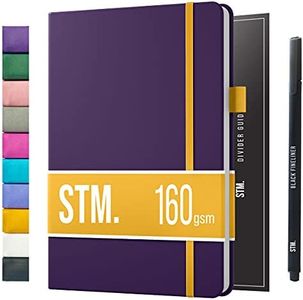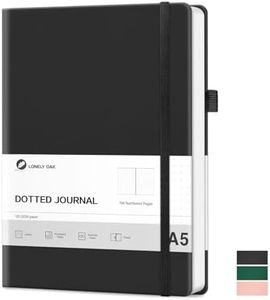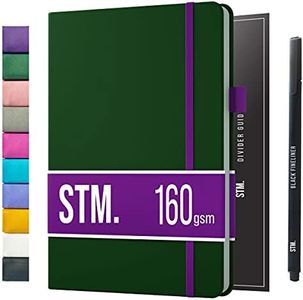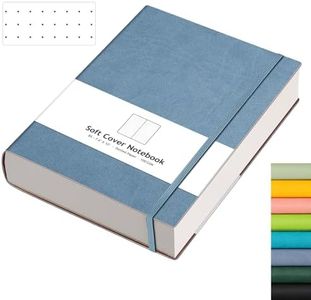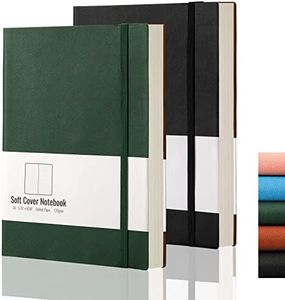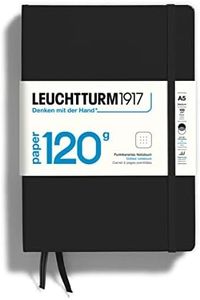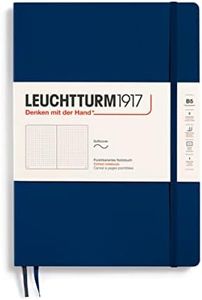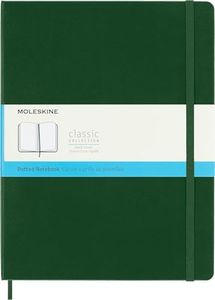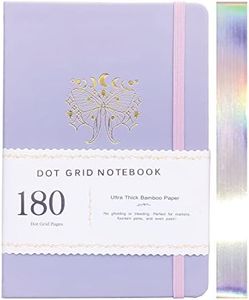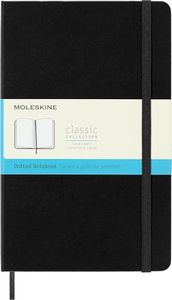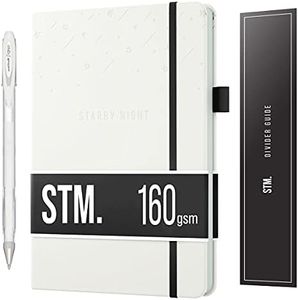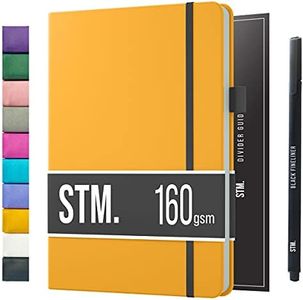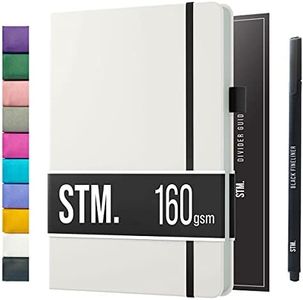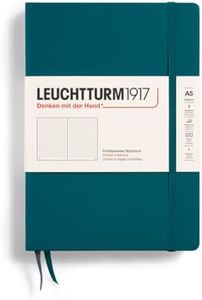We Use CookiesWe use cookies to enhance the security, performance,
functionality and for analytical and promotional activities. By continuing to browse this site you
are agreeing to our privacy policy
10 Best Bullet Journals
From leading brands and best sellers available on the web.By clicking on a link to a third party's website, log data is shared with that third party.
Buying Guide for the Best Bullet Journals
Choosing the right bullet journal is about finding a notebook that suits your personal style and needs. Bullet journaling is a flexible way to organize your thoughts, plans, and creativity, so the best journal for you is one that makes it easy and enjoyable to use regularly. Pay attention to the basics: the journal’s size, paper quality, binding, layout, and cover, as these will shape your day-to-day experience. Think about how and where you'll use it, what tools you’ll write with, and the kinds of pages you like best.Paper Quality (GSM/thickness)Paper quality determines how smooth and durable each page is, as well as how well it handles ink. GSM refers to 'grams per square meter'—the higher the number, the thicker and sturdier the paper. If you use pens or markers that bleed through thin pages, look for journals with paper of at least 90-120 GSM or higher. For light pencil or fine liners, lower GSM might be fine. Choose paper thickness based on your typical writing and drawing tools to avoid issues like ghosting or bleeding.
Page Format (Dotted, Lined, Plain, Grid)The internal page format is how pages are designed (dotted, lined, plain, or grid), which affects how easy it is to structure your notes, drawings, and lists. Dotted pages are popular because they guide you without being restrictive, making them great for both writing and sketches. Lined pages are best for heavy writing, grids for precise layouts (like habit trackers), and plain pages for maximum freedom. Pick the format that matches your planning style and creativity—the more versatile you want your journal, the more likely dots or plain pages will suit you.
Size (A5, A6, B5, etc.)Size refers to the physical dimensions of the journal. A5 (about 5.8 x 8.3 inches) is most common, balancing portability with enough space to write. A6 is much smaller and pocket-friendly but has less room for designs. Larger sizes like B5 give you more room to spread out ideas, but can be bulky to carry. Choose a size based on where you’ll use your journal most: on the go, A6 or A5 may be better; for use at home or a desk, a bigger notebook is often nicer.
Binding (Hardcover, Softcover, Spiral, Stitched)Binding is how the journal is held together and affects its durability and usability. Hardcover notebooks protect your pages and feel more substantial, while softcovers are lighter and flex easily. Spiral bindings let you fold the book back but aren’t as sleek, and stitched binding lays flat and is considered very sturdy. Pick a binding that matches your lifestyle: if you travel or write on the go, hardcovers or stitched bindings are usually best. If you like to tear out pages or lay the book flat, spiral might be right for you.
Number of PagesThe page count tells you how long your journal will last before you need a new one. Some bullet journals have 100-200 pages, which is good for a few months of daily use; others offer more or fewer pages. If you write daily and keep lots of collections, pick a journal with more pages. If you’re just starting or want to change setups often, fewer pages keep things more manageable.
Additional Features (Pen loops, Pockets, Pre-numbered pages, Index, etc.)Extra features make your journaling experience more convenient. Things like elastic closures, pen holders, back pockets for stickers or notes, pre-numbered pages, and an index section help keep you organized and save setup time. Pick additional features based on your habits—if you carry pens everywhere, a loop is helpful. Pre-numbered pages and indexes are great if you want structure without extra setup.
